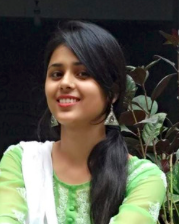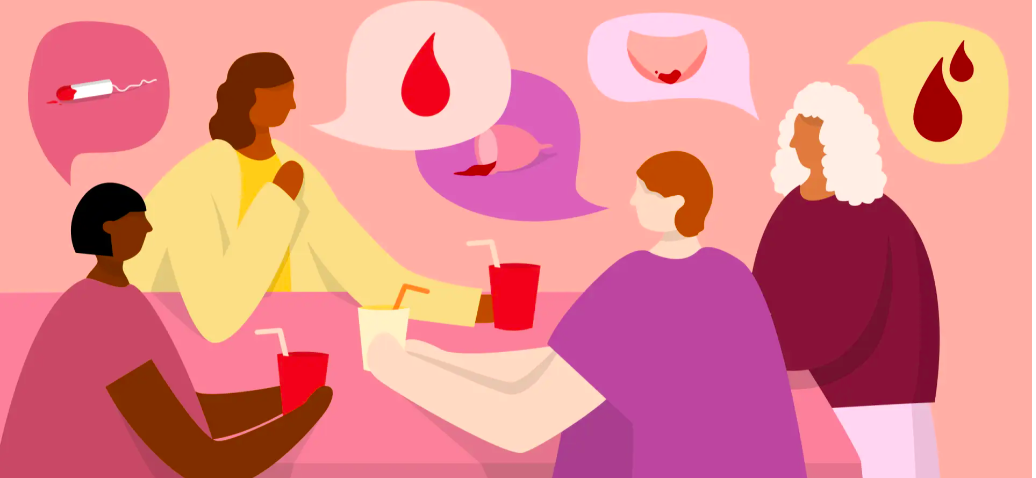Sometimes we hesitate to talk about periods, it may make us, and the child feels a little uncomfortable. But children need reliable information!
Helping the child to understand their body and how all body parts works will help them to take care of their health.
We first need to know what the child knows about puberty. Clarify any misinformation, ask if the child has any questions, and explain the basics. We must share our experiences with them.
The child needs to know the facts about the menstrual cycle and all the changes that puberty brings to the female body. Friends might provide incomplete information. Talking to the child can help to eliminate fears or anxiety, as well as positively influence the child’s body image.
Let’s Understand “Periods (Menstruation)”
A period occurs because of changes in hormones in the female body. Hormones are chemical messengers. The ovaries release the hormones estragon and progesterone. These hormones cause the lining of the uterus (or womb) to build up. The built-up lining is ready for a fertilized egg to attach and start developing. If there is no fertilized egg, the lining breaks down and bleeds. Then the same process happens all over again. It usually takes about a month for the lining to build up, then break down. That is why females get their periods once in a month.
It’s also common for teens to have irregular periods. It might take six years or more after your period starts for your cycle to become regular. The average menstrual cycle lasts 28 days — counting from the first day of one period to the first day of the next period.
When Do Most Girls Get Their First Period?
Most girls get their first period when they’re between 10 and 15 years old. The average age is 12, but every girl’s body has its own way to respond.
There are some signs that a girl’s periods may start soon.
A girl gets her period about 2 years after her breasts start to develop.
Vaginal discharge fluid (sort of like mucus) that a girl might see or feel on her underwear. This discharge usually begins about 6 months to a year before a girl gets her first period.
Hair starts growing in her underarms and private parts.
Here Is One More Thing to Understand.
Premenstrual syndrome (PMS) is a combination of symptoms that many girls get about a week or two before their period. Most girls, over 90%, say they get some premenstrual symptoms.
Physical symptoms of PMS
Swollen or tender breasts.
Constipation or diarrhoea.
Bloating or a gassy feeling.
Cramping
Headache or backache
Clumsiness
Lower tolerance for noise or light
Emotional or mental symptoms of PMS
Irritability or hostile behavior.
Feeling tired.
Sleep problems (sleeping too much or too little).
Appetite changes or food cravings.
The trouble with concentration or memory.
Tension or anxiety.
Depression, feelings of sadness, or crying spells.
Mood swings.
Cramps are one of the most common symptoms to have before/during your period. They can be super painful, or just a little annoying.
Here are some tips for children to deal with cramps.
Do breathing exercises, meditation, or yoga.
Putting a heating pad on your belly or lower back.
Avoiding foods and drinks with caffeine, salt, and sugar in the two weeks before your period.
Get enough sleep – Lack of sleep is linked to depression and anxiety.
Do what you like.
What To Use?
Make them understand how to use sanitary pads, tampons, and menstrual cups and the importance of changing them regularly — every four to eight hours for pads and tampons and every eight to 12 hours for menstrual cups.
Encourage your child to carry supplies in a backpack, purse, or locker — just in case.
Reassure the child that it’s normal to feel worried about menstruating, but it’s nothing to be to worry about periods.
Periods are a natural, healthy part of a girl’s life. They shouldn’t get in the way of doing day-to-day work, having fun, and enjoying life.
About the Author.
 Sakshi Jaiswal, She is a Counselling Psychology trainee. She has completed her Bachelor’s and masters in Psychology. She is to helping children to maintain good mental health and to be happy in their life. Currently, she is pursuing a Diploma course from NCERT. she is interested in working with children and adolescents. her interest includes Counseling Psychology and Psychopathology.
Sakshi Jaiswal, She is a Counselling Psychology trainee. She has completed her Bachelor’s and masters in Psychology. She is to helping children to maintain good mental health and to be happy in their life. Currently, she is pursuing a Diploma course from NCERT. she is interested in working with children and adolescents. her interest includes Counseling Psychology and Psychopathology.

